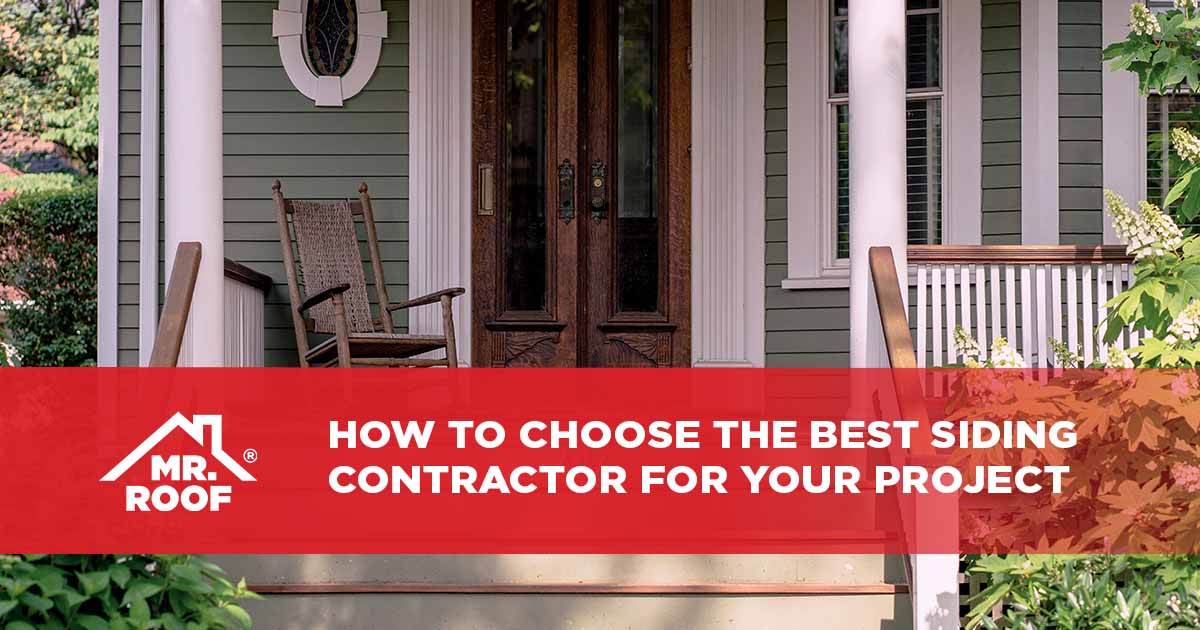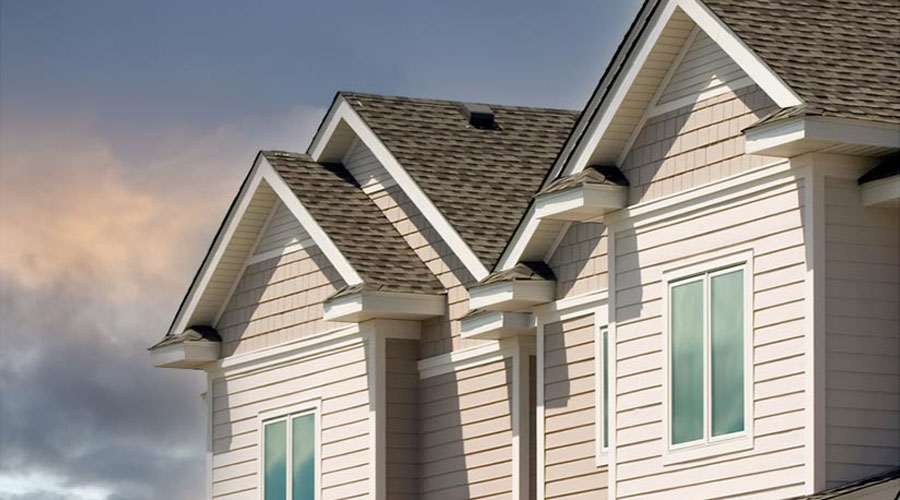The Vital Overview to the Various Types of House Siding and Their Special Benefits
In the world of home enhancement, choosing the ideal house siding is a crucial decision that impacts both visual allure and useful efficiency. With so numerous choices to think about, which exterior siding material truly stands out for your specific project?
Timber House Siding
Timber exterior siding, a popular choice for residential outsides, supplies a classic visual that combines natural appeal with structural stability. This home siding product is available in numerous styles, including clapboard, roof shingles, and board-and-batten, allowing house owners to personalize their appearance to match their style choices. Timber exterior siding is commonly crafted from resilient species such as cedar, redwood, or yearn, which are understood for their resilience and ability to endure environmental stressors.
Among the key advantages of wood siding is its outstanding insulation properties, which can add to energy performance and reduced home heating costs. In addition, timber home siding is naturally degradable, making it an eco-friendly option when sourced sustainably. Routine upkeep, including paint or discoloration, can prolong its life expectancy and enhance its appearance, permitting property owners to protect the all-natural appeal of the timber.
However, prospective downsides include sensitivity to insects, rot, and climate damage, requiring adequate therapy and maintenance - morris siding contractor. Despite these problems, when properly cared for, wood house siding can supply a sturdy and gorgeous service that improves the personality of a home while supplying a warm, inviting environment

Vinyl Siding
Plastic exterior siding has actually become a leading option for homeowners looking for a low-maintenance exterior alternative that incorporates toughness and cost. This flexible material is crafted from polyvinyl chloride (PVC), making it immune to numerous climate problems, including moisture and UV rays. Because of this, vinyl home siding does not warp, rot, or discolor, guaranteeing durable aesthetic allure.
Among the primary advantages of vinyl house siding is its comprehensive array of styles and shades, enabling home owners to achieve the wanted look for their residential property without the requirement for constant repainting. Furthermore, plastic exterior siding is easy to set up, which can significantly lower labor expenses during building and construction or restoration tasks.
Plastic home siding likewise adds to power effectiveness. Many alternatives attribute insulation support, which improves thermal performance, helping to preserve comfortable indoor temperatures and possibly decreasing energy expenses. Furthermore, its smooth surface promotes simple cleansing, needing only regular cleaning with a garden tube to eliminate dirt and debris.
Fiber Cement Home Siding
Fiber cement exterior siding has actually acquired traction among property owners and building contractors alike as a result of its exceptional combination of sturdiness and aesthetic flexibility. Composed of a combination of cellulose, concrete, and sand fibers, this exterior siding option is crafted to hold up against severe weather condition conditions, including high winds, heavy rain, and temperature level variations, making it a long-lasting choice for domestic outsides.

Among the key advantages of fiber cement siding is its resistance to insects, such as termites, and its non-combustible nature, offering enhanced fire safety. morris siding contractor. Furthermore, it is offered in a large range of shades, designs, and appearances, allowing home owners to accomplish their wanted aesthetic without giving up performance
One more advantage is its low upkeep requirements; fiber concrete siding typically needs paint or staining every 5-10 years, which is less frequent than various other materials. Furthermore, its long life adds to a lower general expense of possession, as it decreases the demand for frequent repair work or substitutes.
Inevitably, fiber concrete siding stands for a superb investment for those looking for a durable, eye-catching, and versatile outside choice, incorporating both kind and feature to enhance the home's curb allure.
Metal Exterior Siding
The appeal of metal exterior siding hinges on its robust sturdiness and contemporary aesthetic appeal, making it a favored selection for modern design. Offered in materials such as aluminum and steel, metal siding offers a range of shades and surfaces, enabling property owners to accomplish an individualized look that matches their style vision.

Energy efficiency is one more considerable benefit, as several metal siding products are developed with insulation choices that assist control indoor temperatures. This can cause minimized power prices gradually. In addition, steel home siding is usually recyclable, making it an environmentally friendly selection for sustainability-minded homeowners.
The installation procedure for steel home siding can be fairly uncomplicated, causing a quicker turn-around time for construction projects. In general, steel siding incorporates functionality and design, making it a functional choice for those seeking a aesthetically attractive and enduring outside surface.
Brick and Rock Home Siding
Brick and rock home siding stands apart as a timeless selection that enhances the visual appeal of Find Out More any home. Known for their longevity and reduced maintenance, these products provide an exceptional roi while elevating the building's visual allure. Available in various colors, textures, and patterns, block and rock can be tailored to match diverse building styles, from standard to modern.
Among the primary advantages of block and rock exterior siding is their power more tips here performance. Both materials possess all-natural shielding homes that aid regulate indoor temperature levels, possibly reducing home heating and air conditioning prices. Additionally, they use premium fire resistance compared to various other house siding options, contributing to boosted safety.
One more advantage is their longevity. Block and rock can last for decades, commonly requiring marginal upkeep beyond periodic cleaning. Unlike wood house siding, they are impervious to bugs and rot, ensuring a resilient exterior that endures the components.
Final Thought
In recap, the option of exterior siding substantially affects a home's aesthetic allure, power effectiveness, and maintenance requirements. Each type of house siding-- whether wood, vinyl, fiber brick, steel, or concrete and stone-- offers special benefits tailored to numerous property owner choices and environmental problems.
One of the key benefits of timber exterior siding is its superb insulation buildings, which can contribute to energy performance and reduced heating prices. Additionally, timber siding is naturally degradable, making it an environmentally friendly alternative when sourced sustainably.One of the primary advantages of steel exterior siding is its resistance to numerous environmental aspects.Energy efficiency is one more substantial benefit, as numerous steel siding products are made with insulation options that assist manage indoor temperature levels. Each type of home siding-- whether timber, find this vinyl, fiber brick, metal, or concrete and rock-- provides one-of-a-kind benefits tailored to various house owner choices and environmental conditions.